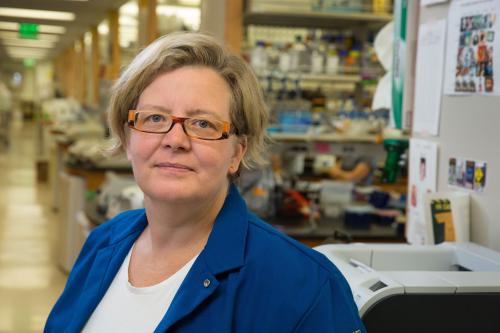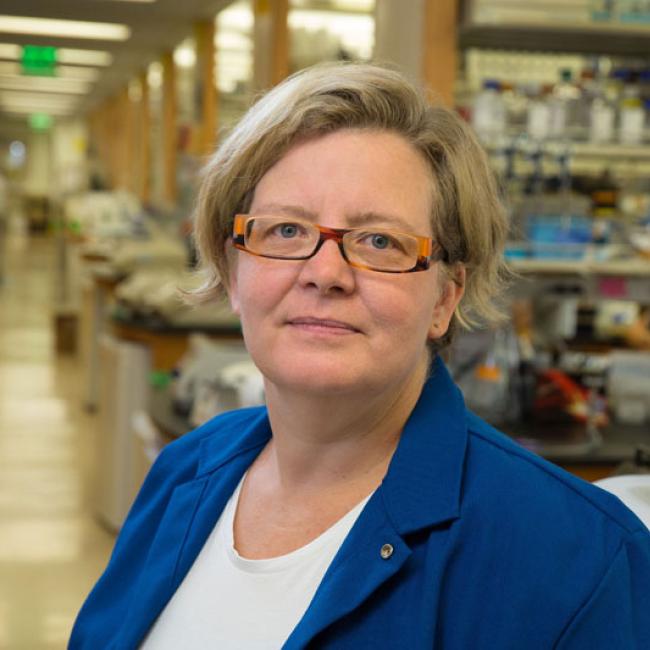
Faculty Profile: Kathrin Plath, Ph.D.
Kathrin Plath appreciates the basics, and that’s good because her focus at UCLA is on basic science – the foundation upon which life-changing discovery is built.
“It’s exciting to come up with new questions, study them and discover the answers,” said Plath, a scientist with the UCLA Broad Stem Cell Research Center and an associate professor of biological chemistry. “You find the answer, and that leads to more questions and even more answers. It’s a very dynamic, exhilarating process.”
Basic science researchers often toil in obscurity. The discoveries built on the foundations of basic science – those with an immediate impact on the world - typically attract the headlines. Yet Plath and her UCLA colleagues achieved a large degree of international renown when they made significant discoveries working on induced pluripotent stem cells.
A New Stem Cell Pathway
Plath and colleagues from UCLA and Harvard University took mouse fibroblasts, easily obtainable skin cells, and added four genes that modulated a process previously described by researchers from Kyoto University, and successfully reprogrammed the fibroblasts into cells that proved nearly identical to embryonic stem cells. Like embryonic stem cells, these induced pluripotent stem cells can give rise to every cell found in the body.
Next, Plath and fellow UCLA Broad stem cell scientists William Lowry, Amander Clark, and April Pyle then performed the feat with human cells. Previously thought impossible, they were the first scientists in California to reprogram human skin cells into cells with the same unlimited properties as embryonic stem cells without using embryos or eggs. The implications of these discoveries for disease treatment could be staggering. Reprogramming cells, such as skin or blood, into embryonic stem cell-like cells could generate a potentially limitless source of patient-specific cells for tissue engineering and transplantation medicine, as well as drug screening and development.
“These findings will have significant implications for regenerative therapies,” said Plath. “Our reprogrammed cells are virtually indistinguishable from embryonic stem cells. We were rather surprised at how well this reprogramming worked.”
Stem Cell Science, Genetic Disease, & Scientific Collaboration
Plath also has focused her research on X chromosome inactivation and discovered that female induced pluripotent stem cells, reprogrammed from human skin cells, retain an inactive X chromosome. This finding has implications for studying X chromosome-linked diseases such as Rett syndrome and has had a major impact on how researchers now think about disease modeling.
The level of collaboration that makes these kinds of discoveries possible attracted Plath to UCLA. Since her arrival in 2006, Plath has been fostering relationships with new mentors and scientific collaborators. “The depth and variety of research interests here opens doors to all kinds of collaborative opportunities,” Plath said. “I enjoy interacting with scientists across campus. It’s very special to have colleagues that are supportive and want to share and help.”
The importance and quality of Plath’s work has been recognized by the NIH with a significant stem cell Program Project grant and an Innovator Award, as well as two California Institute for Regenerative Medicine (Proposition 71) grants.
From Berlin to UCLA
The daughter of two East German scholars, she experienced the power of scientific collaboration first hand when she left Berlin’s Humboldt University to study under the guidance of Tom Rapoport, a renowned East German scientist who had become a professor of cell biology at Harvard.
“I liked the way he thinks about science. He knows all the details and enjoys discussing them,” Plath said. “He’s really involved in the research. His approach allows him to push his science quite far.” Her other adviser, Rudolf Jaenisch at the Massachusetts Institute of Technology, influenced Plath dramatically as well. “He is able to envision each important step in his field and then takes the risk to move into that new direction long before others,” she said.
Plath never imagined such opportunity when she entered Humboldt University in East Germany only weeks before the Berlin wall was toppled. “The day the wall came down was exciting,” said Plath, who grew up on the east side of the wall. “Rumors were going on for a long time that something would happen. Then one night you could go over to West Berlin, go to West Germany, travel in Western Europe, the U.S. – it was amazing.”
Today, the larger impact on her life is more apparent. “Looking back at what I’ve been able to accomplish since coming to America,” Plath said. “I doubt I would have been able to do that if I’d stayed in Germany.”
